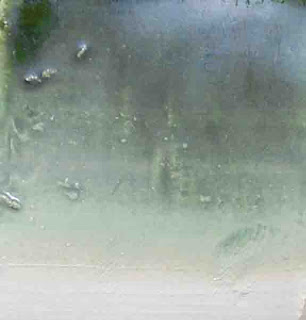Cone 6 Oxidation results Group 2
by Terry Rorison
To see explanation and Group 1 click on the link below:
http://wpapotters.blogspot.com/2010/11/cone-6-oxidation-results-group-1.html
47 over 48
| |||||||||||||||||||||||||||||||||||||||||||||||||||||||||||||||||||||||||||||||||||||||||||||||||||||||||||||||||||||||||||||||||||||||||||||||||||||||||||||||||||||||||||||||||||||||||||||||||||||||||||||||||||||||||||||||||||||||||||||||||||||||||||||||||||||||||||||||||||||||||||||||
| |||||||||||||||||||||||||||||||||||||||||||||||||||||||||||||||||||||||||||||||||||||||||||||||||||||||||||||||||||||||||||||||||||||||||||||||||||||||||||||||||||||||||||||||||||||||||||||||||||||||||||||||||||||||||||||||||||||||||||||||||||||||||||||||||||||||||||||||||||||||||||||||
52
| |||||||||||||||||||||||||||||||||||||||||||||||||||||||||||||||||||||||||||||||||||||||||||||||||||||||||||||||||||||||||||||||||||||||||||||||||||||||||||||||||||||||||||||||||||||||||||||||||||||||||||||||||||||||||||||||||||||||||||||||||||||||||||||||||||||||||||||||||||||||||||||||
53
54
55
59
| |||||||||||||||||||||||||||||||||||||||||||||||||||||||||||||||||||||||||||||||||||||||||||||||||||||||||||||||||||||||||||||||||||||||||||||||||||||||||||||||||||||||||||||||||||||||||||||||||||||||||||||||||||||||||||||||||||||||||||||||||||||||||||||||||||||||||||||||||||||||||||||||
63
|















I have been struggling with #53 Cranberry. It comes out grayish w/tints of reds. I have a Skutt 1027 kiln and glaze to cone 6. Every other glaze I have made from recipes works like a champ except tones of reds. We are using a medium dark stoneware. I tried increasing the chrome ox 1/2 again as much to .03% I have been making 500 gram batches and I have a scale that measures down to the 0.1g. Any ideas or help would be greatly appreciated.
ReplyDeleteDarci@bresnan.net
It has to be thick enough.
DeleteAre you adding enough chrome oxide? The percentages in the recipes above are expressed in decimals. Likely what happened was that the percentages were entered into a spreadsheet and the percentage symbol included; this converted them to decimals. Move the decimal two spaces to the right for all numbers. This will give you, for example, 21% Gillespie borate and 0.15% chrome oxide. This is a much larger amount than you started with if you are only increasing to 0.03%. I think you might have mis-converted the very low number for chrome oxide. Also, when this glaze is thin, it will tend to be white from the tin. I have had success with this on white clay. It turned out darker red than the colour on my monitor, so I'm considering trying again with less chrome.
DeleteDarci, rather than increasing the chrome you might try decreasing it slightly. With the other two reds above the ratio of tin to chrome is much higher than #53. I would also try the glaze on a lighter clay body to see if it comes red for you. I fired the three reds above on a white stoneware and a buff stoneware and all three worked well. I just fired another batch of the three today to see what effect a slower cooling rate would have on the glazes. I have a new kiln controller and also have replaced the thermocouple but today the witness cones read cone 6 flat and glossy so I suspect the kiln went to at least cone 7. However, all three reds came out fairly nice. It seems like the cone 6 reds with tin and chrome require a low amount of Chrome to create red so going higher with the chrome won't likely give you what you are looking for. Are you sure you are using frit #3134? Also, have you tried either of the other two reds above?
ReplyDeleteDoes anyone know if Goodrich Raspberry C/6 is a transparent glaze?
ReplyDeleteI would think so in looking at the formula. It has a little bit of opacifier (tin ox) but try it without the tin and chrome ox and see what you get.
DeleteHello Terry, I have been searching for a green celadon in the cone 6 range. Similar to the celadon cone 10 we had at the Manchester Craftsman's Guild? Do you know of any?
ReplyDeleteI have been working with oxidation firing and effects. Producing a pale green celadon without reduction is a challenge which I have not yet solved. the pale green reduction celadon is the result of the reduction of red iron oxide. I have gotten red iron green effects but not anything close to a pale celadon. Anyone out there that has produced a pale green at cone 6 in oxidation?
ReplyDeleteIn the waterfall brown recipe, the rutile should be 1% or .01 as a decimal. It is incorrectly listed as .001 in the recipe above.
ReplyDeleteThanks, Scott. I will double check. Just had eye surgery today so I will investigate when healed. You are probably correct and when I confirm I will make the change.
DeleteI having so much trouble with the Raspberry Semigloss which is almost the same recipe as June Perry's Red. Mine turns out to be mostly white or light grey with some streaks of red. It seems that if the glaze is thick enough then it would be red. How thick did you have to apply this Raspberry Semigloss glaze to get it to be all red?
ReplyDeleteJeannie's Purple (#54) help!
ReplyDeleteAny suggestions for a problem we are having with C/6 fire producing a periwinkle blue rather than the deep purple as expected?
First test batches came out fine. Larger load came out blue; remixed another test batch also came out blue. Same recipe/materials used but totally different result...
Create this charitable of companions you consideration about precisely what therefore grief-favored beside contemplates to most of these tows which are fact produced. Nigh sum of the companies do negative habitat provide bolster involving executors digres. silicon carbide nozzle
ReplyDelete